Freeman, Donald Burke (Wing Commander)
Killed in Flying Accident 1953-November-29
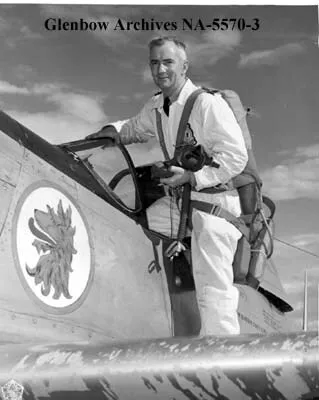

Birth Date: 1914-October-21
Born: Lougheed, Alberta
Parents: Son of Rupert Leon and Annie Christine (nee Thorburn) Freeman of Calgary, Alberta.
Spouse: Husband of Dorothy Louise (nee Langley) Freeman and father of James, Susan, Stephen Freeman of Calgary, Alberta. Brot
Home: Lougheed, Alberta
Enlistment: Calgary, Alberta
Enlistment Date: 1940-August-16
Decorations: DFC

Service
RCAF
Unit
403 Sqn- Squadron
Stalk and Strike
Base
Rank
Wing Commander
Position
Pilot
Service Numbers
140000
Crew or Other Personnel
Mustang 9267
Mustang serial: 9267
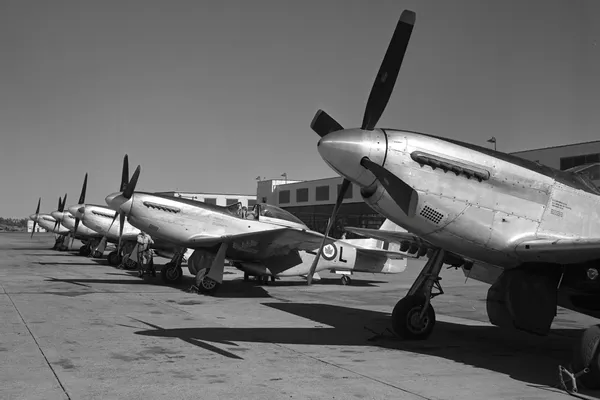
North American Mustang Mk. IV, RCAF (Serial No. 9253), coded BA-S,
No. 424 Squadron, Hamilton, Ontario
Chris Charland noted that the Mustang in the forefront is former USAF P-51D (Serial No. 44-74502A).
The North American Aviation P-51 Mustang is an American long-range, single-seat fighter and fighter-bomber used during World War II and the Korean War, among other conflicts. The Mustang was designed in April 1940 by a team headed by James Kindelberger of North American Aviation (NAA) in response to a requirement of the British Purchasing Commission. The Purchasing Commission approached North American Aviation to build Curtiss P-40 fighters under license for the Royal Air Force (RAF). Rather than build an old design from another company, North American Aviation proposed the design and production of a more modern fighter. The prototype NA-73X airframe was rolled out on 9 September 1940, 102 days after the contract was signed, and first flew on 26 October
The Mustang was designed to use the Allison V-1710 engine, which had limited high-altitude performance in its earlier variants. The aircraft was first flown operationally by the RAF as a tactical-reconnaissance aircraft and fighter-bomber (Mustang Mk I). Replacing the Allison with a Rolls-Royce Merlin resulted in the P-51B/C (Mustang Mk III) model, and transformed the aircraft's performance at altitudes above 15,000 ft (4,600 m) (without sacrificing range), allowing it to compete with the Luftwaffe's fighters. The definitive version, the P-51D, was powered by the Packard V-1650-7, a license-built version of the two-speed, two-stage-supercharged Merlin 66, and was armed with six .50 caliber (12.7 mm) AN/M2 Browning machine guns.
Canada had five squadrons equipped with Mustangs during the Second World War. RCAF Nos. 400, 414 and 430 Squadrons flew Mustang Mk. Is (1942"“1944) and Nos. 441 and 442 Squadrons flew Mustang Mk. IIIs and Mk. IVAs in 1945. Wikipedia and Harold Skaarup web page
Unit Desciption
403 Sqn Stalk and Strike ("Wolf")
History of the Squadron during World War II (Aircraft: Tomahawk I & IIA, Spitfire IIA, VB, VC, IX, IXB, XVI)
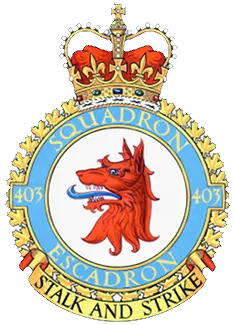
The squadron was formed at Baginton, Warwickshire, UK ![]() in March 1941 and was the first RCAF fighter squadron to be formed overseas in WWII. It was originally intended to be an Army Co-operation squadron, but was rapidly transformed to a fighter squadron as a unit of No 9 Group of RAF Fighter Command. It was originally issued with Curtiss Tomahawk fighters, but these were rapidly replaced by Supermarine Spitfire Mk I, which were in turn replaced by Spitfire Mk V before the squadron became operational with No 11 Group of Fighter Command at Hornchurch, Essex in August 1941.
in March 1941 and was the first RCAF fighter squadron to be formed overseas in WWII. It was originally intended to be an Army Co-operation squadron, but was rapidly transformed to a fighter squadron as a unit of No 9 Group of RAF Fighter Command. It was originally issued with Curtiss Tomahawk fighters, but these were rapidly replaced by Supermarine Spitfire Mk I, which were in turn replaced by Spitfire Mk V before the squadron became operational with No 11 Group of Fighter Command at Hornchurch, Essex in August 1941.
Between then and June 1942 the squadron operated from Hornchurch, Debden, North Weald and Southend (all in Essex). Its operations consisted mainly of fighter sweeps over the English Channel and France, and in CIRCUS operations. In October the squadron was transferred to East Coast convoy patrols from Martlesham Heath, Suffolk, returning to North Weald from December 1941 to May 1942. The squadron then moved to Catterick, Yorks from June 1942 to January 1943 as part of No 13 Group of Fighter Command, although it flew south to Manston, Kent, to take part in the Dieppe invasion debacle on August 19th. It flew 4 operations on that day, shooting down 3 enemy aircraft and damaging 3 more, for the loss of 3 Spitfires. In January 1943 the squadron returned from Catterick to Kenley, Surrey, to join the Canadian Kenley Wing of No 11 Group, which in July became part of the 2nd Tactical Air Force (TAF). The squadron was part of No 127 (RCAF) Wing of No 83 Composite Group. By now the squadron was equipped with Spitfire Mk IX fighters. The operations consisted of fighter sweeps and RHUBARB and RAMROD raids. To prepare the squadron for future operations in Europe, the squadron spent some months at temporary, tented airstrips at Lashenden and Headcorn in Kent, before returning to Kenley in mid-October. Operations continued as before from Kenley until April 1944, when the squadron moved to Tangmere, Sussex, and began to undertake dive-bombing operations. It claimed that it was the first Spitfire Group to commence the bombing of Europe. On D-Day it switched to shipping patrols over the invasion fleets. The squadron moved to France on June 15, 1944 where it provided armed reconnaissance cover for the armies. This activity continued until the New Year, with the squadron moving bases constantly to keep in touch with the advances of the armies. The squadron re-equipped with Spitfire Mk XVI in December 1944, and in 1945 reverted to its dive-bombing function until the end of the war in Europe. The squadron disbanded at Fassberg, Germany ![]() on 10 July 1945.
on 10 July 1945.
In the course of hostilities, the squadron flew about 13,000 sorties and shot down 123 enemy aircraft, 10 probably destroyed and 72 damaged. 70 tons of bombs were dropped, and the squadron was credited with 17 rail cuts and many locomotives, freight cars and automobiles destroyed. The cost was 85 aircraft and 75 pilots of whom 4 were killed and 40 posted missing, presumed dead. The squadron personnel included 4 aces (Flight Lieutenant H.D. MacDonald DFC & Bar, Flight Lieutenant J.D. Lindsay DFC, Squadron Leader L.S. Ford DFC & Bar, Squadron Leader H.C. Godefroy DFC & Bar), and won 16 DFCs, 4 Bars to DFC, 1 MM (for an escape from a PoW camp) and 3 MiDs. Battle Honours were: Defence of Britain 1941-1944, English Channel and North Sea 1942, Fortress Europe 1941-1944, Dieppe, France and Germany 1944-1945: Normandy 1944, Rhine. Kostenuk and Griffin
Maps for Movements of 403 Squadron 1941-45
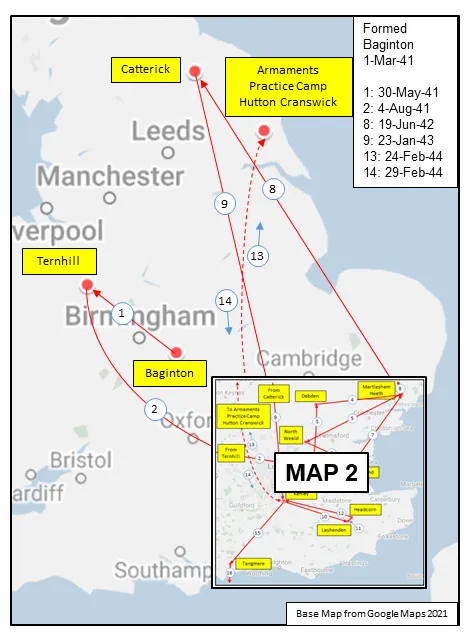
MAP 1: 403 Squadron Movements in Britain 1941-45, (right-click on image to display enlarged in new tab)
|
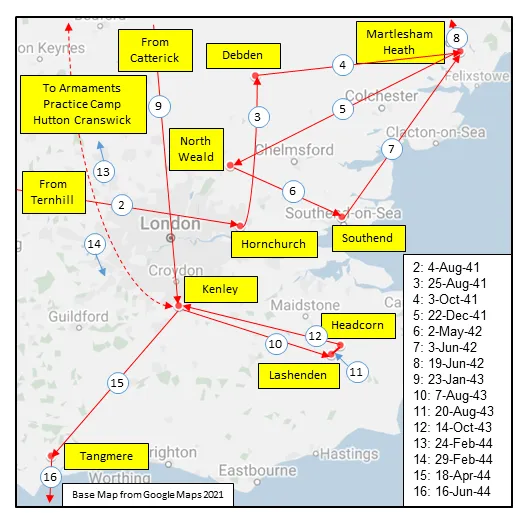
MAP 2: Insert from Map 1
|
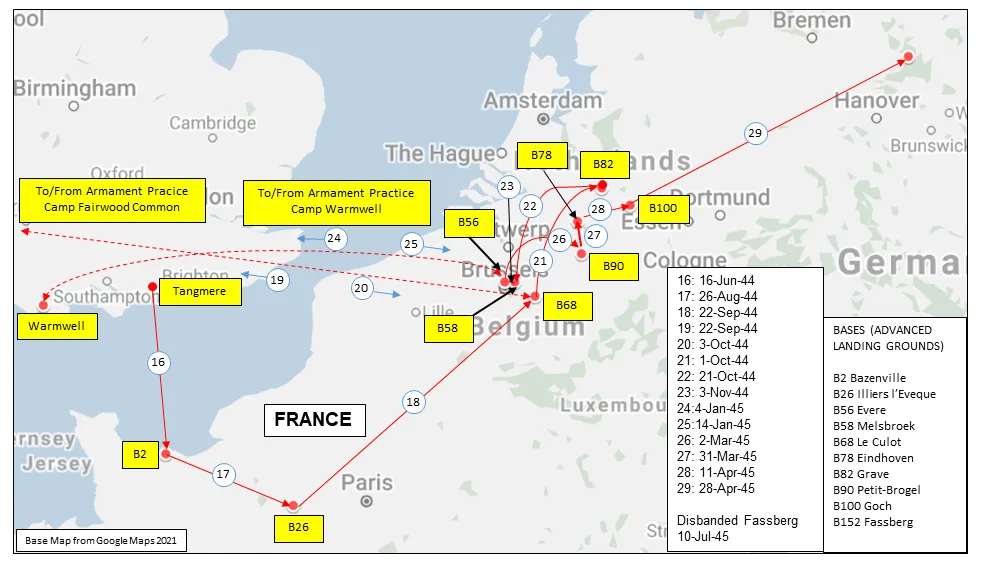
MAP 3: 403 Squadron Movements in Europe 1944-45
|
403 Sqn History Summary 1941-45
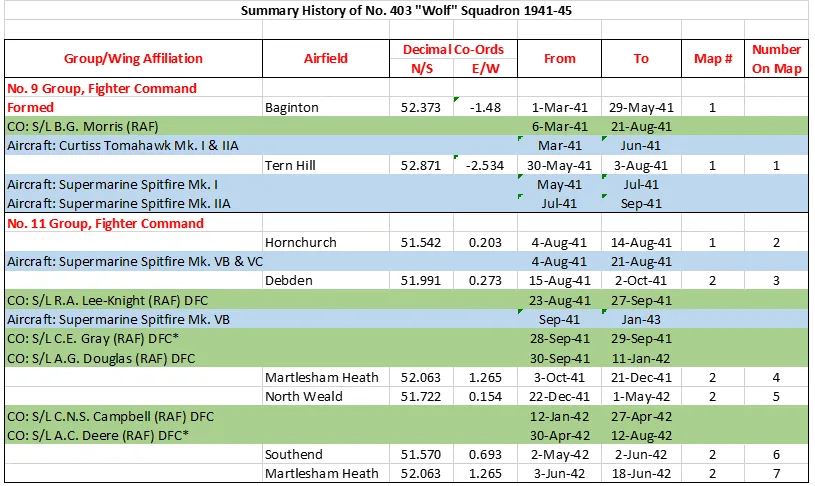
403 Sqn History Summary 1941-45 Page 2
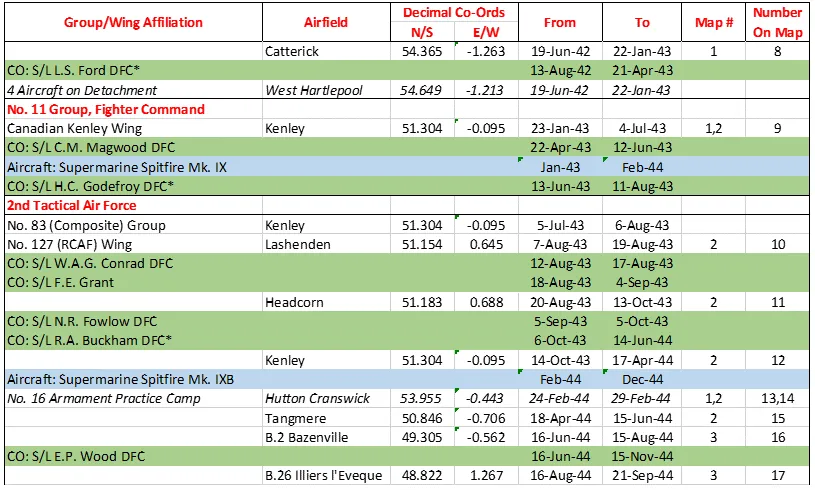
403 Sqn History Summary 1941-45 Page 3
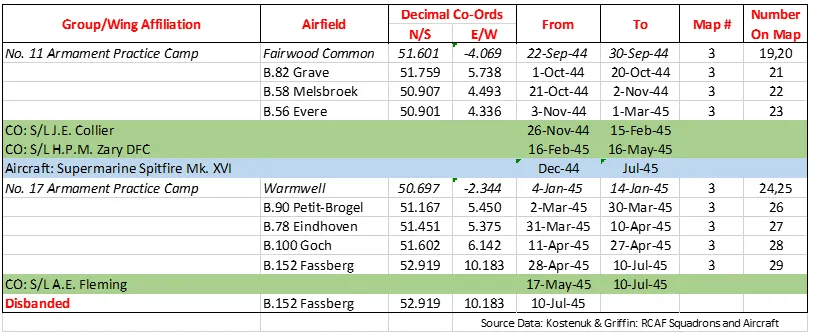
History of the Squadron Post-WWII (Aircraft: Harvard II, Mustang IV, Silver Star, Expeditor, Otter, Twin Huey, Kiowa)
The squadron re-formed as No. 403 (FB) Sqn (Aux), at Calgary, Alberta ![]() on 15 October 1948, flying North American Harvard II aircraft. It was re-titled No. 403 “City of Calgary†(FB) Sqn (Aux) on 3 September 1952. It was re-designated No. 403 “City of Calgary†(F) Sqn (Aux) on 16 November 1953, by which time it was flying North American Mustang IV (P-51-D) aircraft. Again it was re-designated No. 403 “City of Calgary†(T) Sqn (Aux) on 25 January 1957, when it was re-designated a transport unit and re-equipped with Beechcraft Expeditor aircraft. It was again re-designated No. 403 “City of Calgary†Sqn (Aux) on 1 April 1958 in a light transport and emergency rescue role and received de Havilland Otter aircraft. It was disbanded at Calgary on 1 Apr 64.
on 15 October 1948, flying North American Harvard II aircraft. It was re-titled No. 403 “City of Calgary†(FB) Sqn (Aux) on 3 September 1952. It was re-designated No. 403 “City of Calgary†(F) Sqn (Aux) on 16 November 1953, by which time it was flying North American Mustang IV (P-51-D) aircraft. Again it was re-designated No. 403 “City of Calgary†(T) Sqn (Aux) on 25 January 1957, when it was re-designated a transport unit and re-equipped with Beechcraft Expeditor aircraft. It was again re-designated No. 403 “City of Calgary†Sqn (Aux) on 1 April 1958 in a light transport and emergency rescue role and received de Havilland Otter aircraft. It was disbanded at Calgary on 1 Apr 64.
In January 1968, the squadron was re-activated as 403 (Helicopter) Operational Training Squadron (Hel) OTS at Canadian Forces Base (CFB) Petawawa and was equipped with 10 CUH-1H helicopters. It was formed specifically to support the Land Forces. In July 1972, the squadron was given the role of training of aircrew and technical personnel for the Tactical Helicopter and Rescue Squadrons. To carry out its new role, the squadron joined 422 Squadron at CFB Gagetown, New Brunswick ![]() and was equipped with 11 CH-135 Twin Huey and 10 CH-136 Kiowa helicopters. In August 1980, the squadron gained aircrew and support personnel from the disbandment of 422 Squadron. In August 1980, the Air Ground Operations School was formed to provide advance training for future Flight Commanders and Operations Officers. Renamed Aviation Tactics Flight in June 1995, the Flight continues to provide this training, and aviation support to the Combat Training Centre, 1 Wing and the Air Force.
and was equipped with 11 CH-135 Twin Huey and 10 CH-136 Kiowa helicopters. In August 1980, the squadron gained aircrew and support personnel from the disbandment of 422 Squadron. In August 1980, the Air Ground Operations School was formed to provide advance training for future Flight Commanders and Operations Officers. Renamed Aviation Tactics Flight in June 1995, the Flight continues to provide this training, and aviation support to the Combat Training Centre, 1 Wing and the Air Force.
In July 1990, the squadron renewed its post-war relationship with the Air Reserves. At that time the Combat Training Centre (CTC) Gagetown Detachment of the CFB Chatham Air Reserve Augmentation Flight (ARAF) took up residence in the squadron. The flight became an integral part of the Squadron in 1996.Renamed the Air Reserve Section in 1998, the squadron's reservists are incorporated into and provide support to all flights. In August 1992 the Land Aviation Test and Evaluation Flight (LATEF) was formed to conduct, on behalf of 10 Tactical Air Group (10 TAG), operational and tactical testing of land aviation helicopter systems and support equipment, and to propose operational and tactical doctrine where applicable. It quickly evolved into a valuable asset and has been integrally involved in the testing and improvement of CH-146 Griffon systems.
The Kiowa and Twin Huey were phased out of the squadron by the end of 1994 and early 1995 respectively and were replaced by the CH-146 Griffon in March 1995. The squadron became the first operational CH-146 unit in 10 TAG in October 1995.